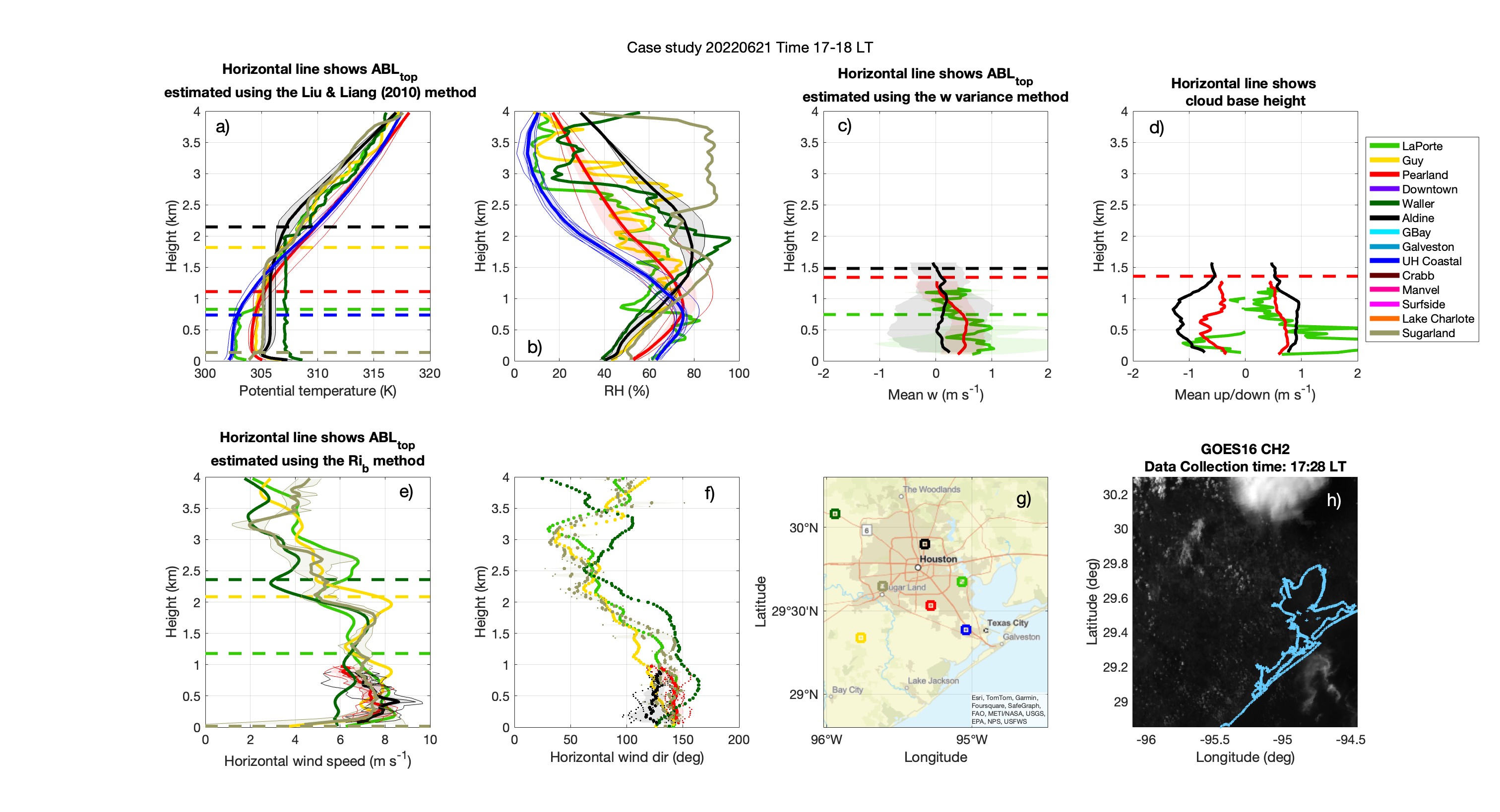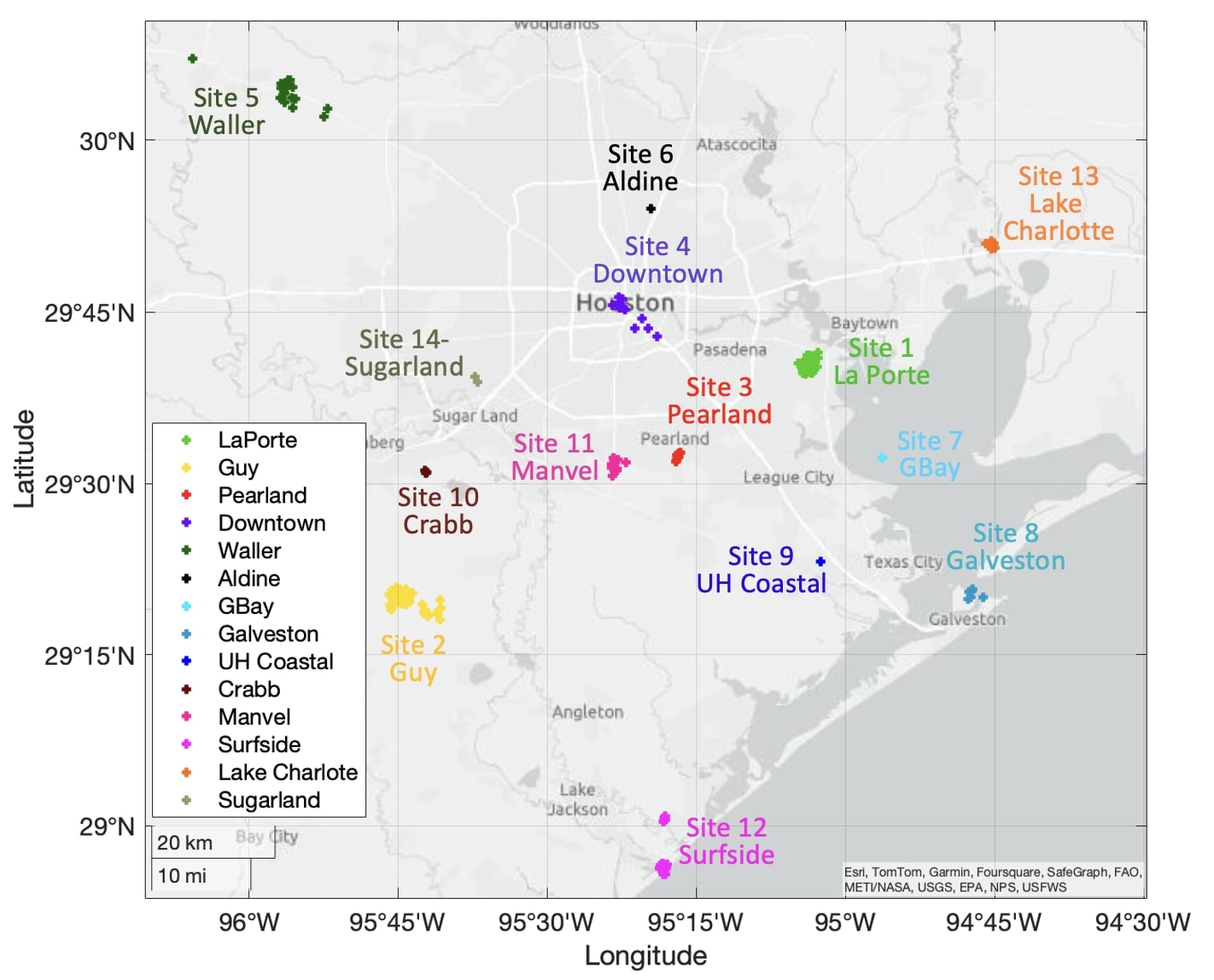Coming together! A 4D observational data set of atmospheric boundary-layer properties in Houston
Submitter
Lamer, Katia — Brookhaven National Laboratory
Mages, Zackary — Stony Brook University
Area of Research
Atmospheric Thermodynamics and Vertical Structures
Journal Reference
Lamer K, Z Mages, B Treserras, P Walter, Z Zhu, A Rapp, C Nowotarski, S Brooks, JH Flynn, M Sharma, PM Klein, M Spencer, E Smith, JG Gebauer, T Bell, L Bunting, T Griggs, T Wagner, and K McKeown. 2024. "Spatially distributed atmospheric boundary layer properties in Houston – A value-added observational dataset." Scientific Data, 11(1), 661, 10.1038/s41597-024-03477-9.
Science

Quick Look image of our value-added ABL data set for 21 June 2022 17:00-18:00 LT. During this day and hour, seven sites were sampled: LaPorte (bright green), Guy (yellow), Pearland (red), Waller (forest green), Aldine (black), UH Coastal (royal blue), and Sugarland (taupe). Image from journal.

For a 46-day period during the summer of 2022, atmospheric boundary-layer (ABL) properties were concurrently measured at several locations across the greater Houston area. The measurements were grouped into 14 sites and treated to produce an open-source, spatially distributed, value-added data set. Image from journal.
Field data from eight teams were brought together, standardized, and enhanced to facilitate research into Houston’s complex atmospheric boundary layer (ABL).
Impact
The open-access, spatially distributed, hourly value-added ABL data set is particularly suited to address the representation of atmospheric processes at kilometer and sub-kilometer scales for which four-dimensional observations of multiple variables are needed. It also provides an avenue for addressing longstanding fundamental questions regarding the degree of failure of existing ABL theories over complex surfaces.
Summary
In 2022, Houston, Texas became a nexus for field campaigns aiming to further our understanding of the feedbacks between convective clouds, aerosols, and ABL properties. Houston’s proximity to the Gulf of Mexico and Galveston Bay motivated the collection of spatially distributed observations to disentangle coastal and urban processes. This research highlight advertises a value-added ABL data set derived from observations collected by eight research teams over 46 days between 2 June and 18 September 2022. The data set spans 14 sites distributed within a ~80-km radius around Houston. Measurements from three types of instruments are analyzed to objectively provide estimates of nine ABL parameters, both thermodynamic (potential temperature, and relative humidity profiles and thermodynamic ABL depth) and dynamic (horizontal wind speed and direction, mean vertical velocity, updraft and downdraft speed profiles, and dynamical ABL depth). Contextual information about cloud occurrence is also provided. The data set is prepared on a uniform time-height grid of 1h and 30m resolution to facilitate its use as a benchmark for forthcoming numerical simulations and the fundamental study of atmospheric processes. The entire data set can be quickly browsed using the quick looks included with the data set, which is openly available for download at Figshare, https://doi.org/10.6084/m9.figshare.c.7124227.v1.
Keep up with the Atmospheric Observer
Updates on ARM news, events, and opportunities delivered to your inbox
ARM User Profile
ARM welcomes users from all institutions and nations. A free ARM user account is needed to access ARM data.


















